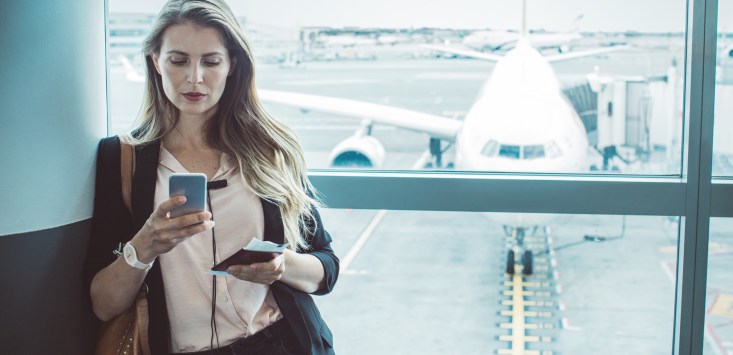
For small and medium businesses, online communication and collaboration tools are a game-changer, saving time and breaking down barriers. From email to instant messaging, video conferencing, and interactive whiteboards, communicating has never been easier.
However, despite the affordability and increasing sophistication of these tools, some small and medium business owners still regularly travel around the globe for face-to-face meetings.
Growing Australian SMEs benefit from business travel
SmartCompany’s 2017 annual survey results reveal that 46 per cent of small business owners travel domestically and 28 per cent internationally up to five times each year. Twenty-seven per cent travel domestically, and 7 per cent internationally, more than five times each year.
While it may appear costly at first glance, investing in travel can offer a big pay-off. For b.box kids co-founder Danielle Michaels, digital communication has its place in the workplace, but not for everything.
B.box was awarded fifth place on the Smart50 list in 2017 recording a three-year revenue growth rate of 419 per cent.
“Digital is great from a day to day perspective, but from a relationship perspective face-to-face meetings are imperative,” said co-founder Dannielle Michaels.
Danielle handles international sales at b.box and is always travelling, whether that’s to trade shows in the US, China or Europe or to visit potential distributors. Face-to face meetings are “key to determining the right distribution partners for us,” she says and travel also helps people “put a face” to the b.box brand.
Business travel benefits: beyond growth
Sharon Melamed, managing director of business matching platform Matchboard says her business simply wouldn’t exist without international travel.
“Back in 2012, I couldn’t find a web development company in Australia that could meet my budget and complex requirements, so my only choice was to find a vendor in a more cost-effective location,” she said.
“I flew to Israel and found a vendor willing to do the work at cost in exchange for the rights to the domestic market there.”
International travel has since helped her understand and launch into new markets, leverage free marketing and “workshop ideas to continuously improve the functionality of the matching platform.”
It also feels safer, says Sharon: “It’s very high risk to set up strategic long-term partnerships via a call or Skype – you need to show commitment and show up in person and look your potential partners in the eye.”
It’s now easier than ever before for small business owners and their employees to travel, with the ease of access to business travel programs that take the hassle out of travel booking, save money and provide access to rewards that benefit managers and employees.
Making the most from travel: perks, support and more
Being on the ground offers the opportunity to share a coffee, better understand culture, and create meaningful connections. It can also invigorate your business enthusiasm – while perhaps squeezing in a little sightseeing.
The Australian Government offers support to small and medium-sized Australian businesses to develop export markets through its Export Market Development Grants scheme. The scheme reimburses up to 50 per cent of eligible export promotion expenses above $5,000 provided that the total expenses are at least $15,000.
Tax deductions are also available to SME owners who travel, though it’s important to ask yourself whether the money spent is directly related to earning an income and ensure you can provide evidence of the money spent.
It can be tempting to rely on digital communication, however international business travel and face-to-face meetings can be crucial in developing, expanding and improving your business.
Award-winning airline, Cathay Pacific Airways, offers over 70 flights a week from Sydney, Melbourne, Brisbane, Cairns, Adelaide and Perth to almost 200 destinations globally via their hub in Hong Kong, together with their regional airline Cathay Dragon.


COMMENTS
Reader comments have been turned off on this post.